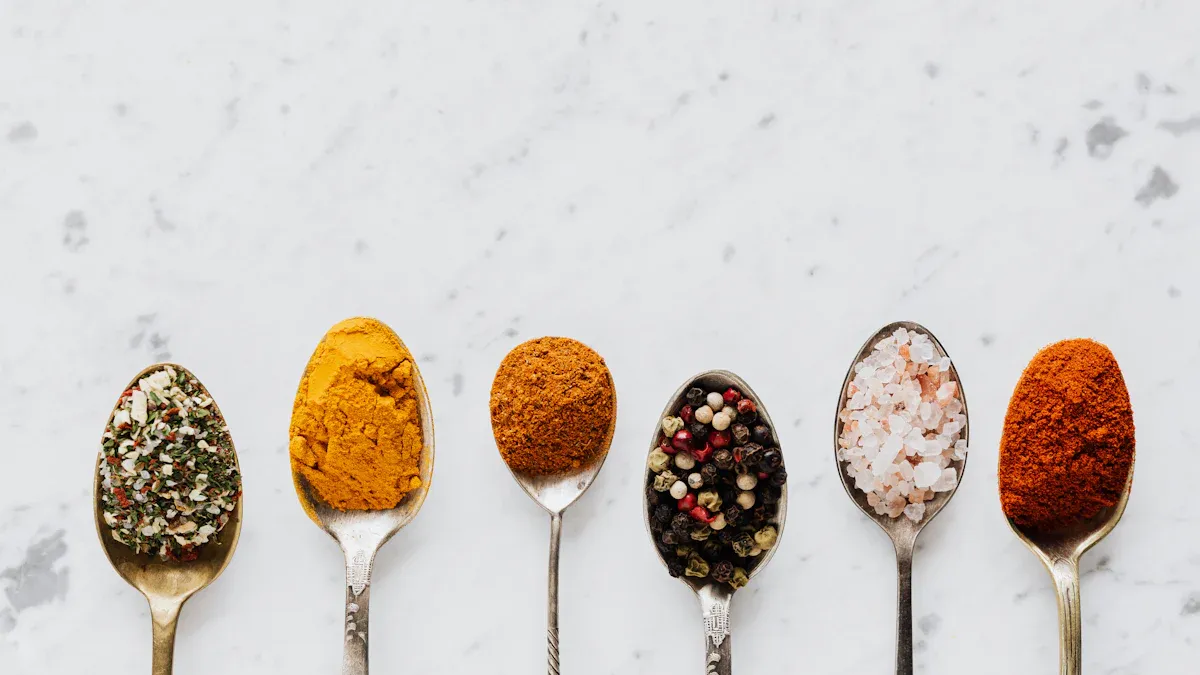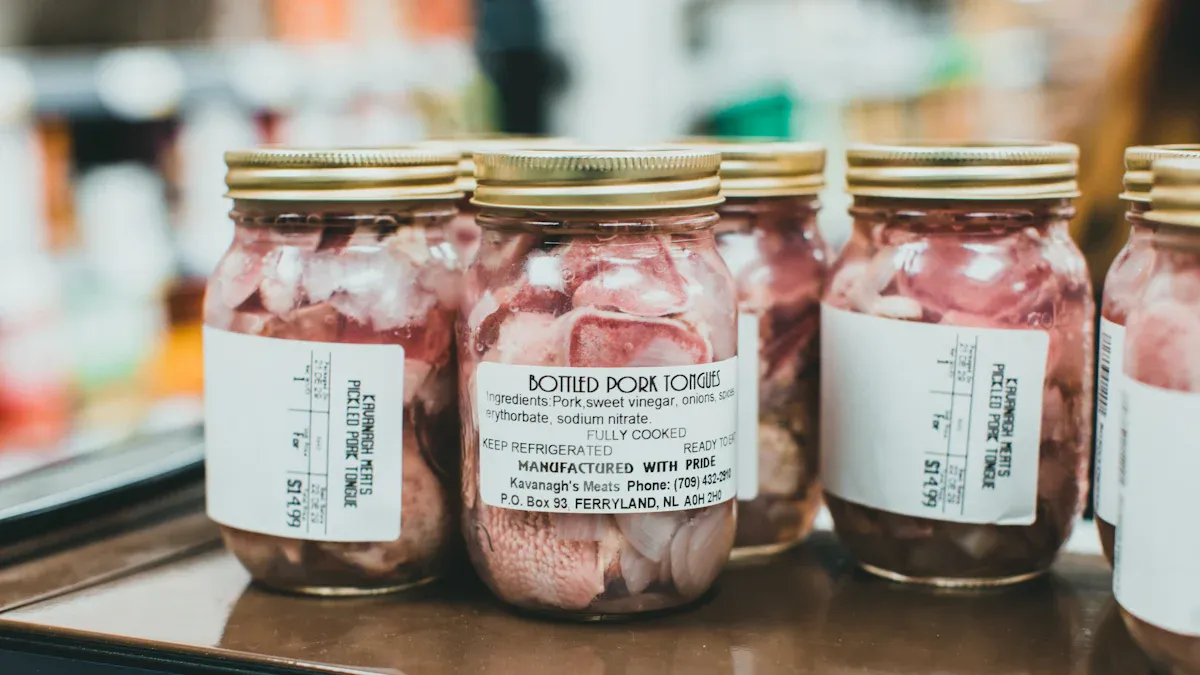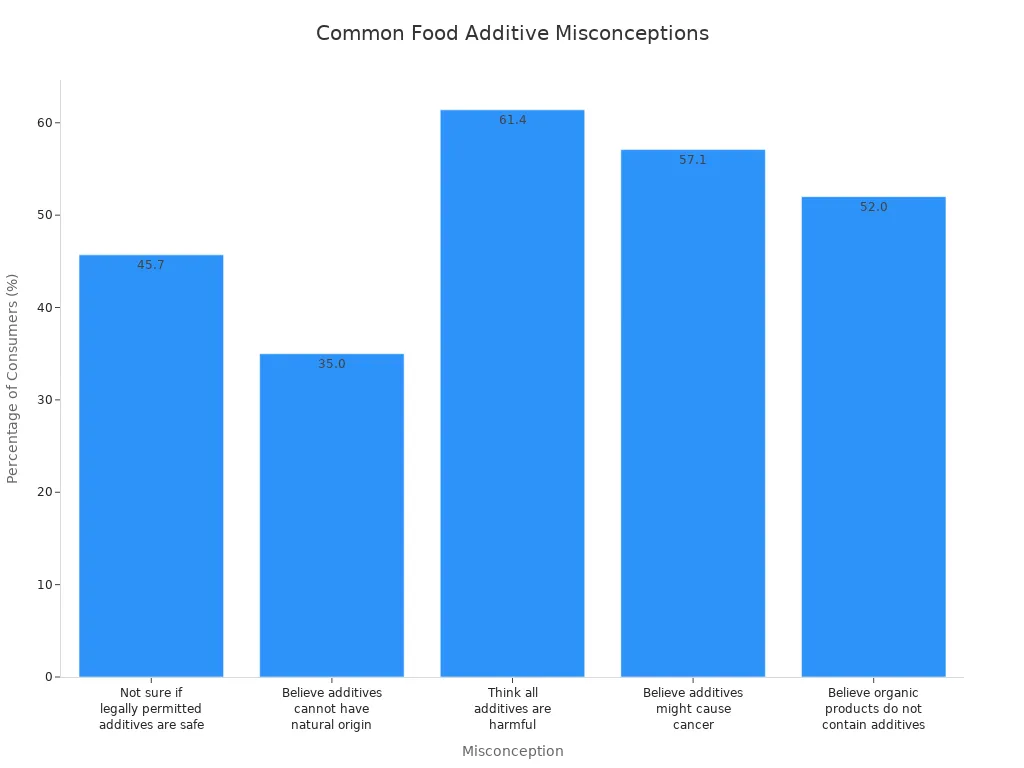Views: 0 Author: Site Editor Publish Time: 2025-09-30 Origin: Site











You see Food Additives in many foods you buy. There are five main types. These are acidity regulators, sweeteners, food thickeners, colorants, and emulsifiers. They help keep foods fresh. They make foods taste better. They make foods look nicer. They also change how foods feel. The FDA checks these additives for safety. ZIO Chemical gives solutions for each type.
In the United States, about 65% of foods have at least one additive.
Most new products use flavoring (60–78%) and other additives (49–70%).
People now want clean labels and natural ingredients. Many people choose plant-based, organic, or non-GMO additives.
You can find out about how each additive is used. You can learn about their safety. You can also learn about any concerns with each additive.
Food additives are found in many foods. They help food stay fresh. They also make food taste better. Additives can make food look nicer too.
There are five main kinds of food additives. These are acidity regulators, sweeteners, food thickeners, colorants, and emulsifiers. Each one does something different.
The FDA checks if food additives are safe. Most people can eat them with no problems. Some people may have allergies or feel sick from them.
Always check food labels to see what additives are inside. This is very important if you have allergies.
Picking natural or organic foods can help you skip artificial additives. Look for labels that are easy to read and brands you trust.

Food Additives help make food safer and tastier. They also help food last longer. ZIO Chemical gives important additives. These include Acidity Regulators, Sweeteners, Food Thickeners, Colorants, Emulsifiers, and Preservatives. You find these in many processed foods. There are other additives too.
Acidity Regulators change the pH level in foods. You see them in sodas, jams, and canned veggies. They keep food fresh and safe. They stop bacteria from growing. The FDA calls them "pH control agents." These include acids, bases, and buffers.
Citric acid comes from fruits and veggies. ZIO Chemical helps with acidity control in many foods.
Note: Some acidity regulators, like citric acid, almost never cause allergies. If you are sensitive, you might have mild stomach problems.
Sweeteners make food taste sweet. You find them in sodas, candy, and baked treats. The FDA splits sweeteners into nutritive (like sugar) and non-nutritive (like aspartame).
Additive Type | Definition |
|---|---|
Non-nutritive sweeteners | Substances with less than 2 percent of sugar’s calories per unit. |
Nutritive sweeteners | Substances with more than 2 percent of sugar’s calories per unit. |
High fructose corn syrup is a sweetener made from corn starch. ZIO Chemical gives both types to food makers.
Some sweeteners, like MSG, can rarely cause allergies. Most people do not react. Sensitive people may get headaches or stomach aches.
Food Thickeners change how food feels. You see them in sauces, ice cream, and yogurt. They help food stay smooth and creamy. The FDA calls them "stabilizers and thickeners."
Guar gum, xanthan gum, and carrageenan are common thickeners. ZIO Chemical gives thickeners for many foods.
Colorants make food look bright and nice. You see them in candy, drinks, and baked goods. The FDA calls them "colors and coloring adjuncts."
Artificial colors come from plants, minerals, or chemicals. ZIO Chemical gives colorants for many foods.
Some colorants, like annatto and carmine, can cause allergies. Tartrazine can cause hives in rare cases. Most people do not react. Check labels if you have allergies.
Emulsifiers help mix things that do not blend, like oil and water. You find them in salad dressings, mayonnaise, and chocolate. The FDA calls them "emulsifiers and emulsifier salts."
Lecithin is a common emulsifier from soy or eggs. ZIO Chemical gives emulsifiers for many foods.
Alert: Emulsifiers can rarely cause allergies, especially if you are allergic to soy or eggs. Some studies show some emulsifiers may cause stomach problems.
The FDA checks all Food Additives to keep you safe. Some additives can cause rare allergies or stomach problems. Scientists found that mixing Food Additives may raise the risk of type 2 diabetes. You can pick natural choices like freezing, salting, canning, pickling, rosemary extract, celery, and garlic.

Food Additives help keep food safe and fresh. ZIO Chemical sells preservatives for longer shelf life. Preservatives stop bacteria and mold from growing. They also keep food from going bad. You find these in bread, canned foods, and snacks.
Function | Description |
|---|---|
Enhancing consumer acceptability | Food additives make food look, feel, smell, and taste better. |
Maintaining and improving nutritional quality | Additives can add back nutrients lost during making food. |
Enhancing stability and keeping quality | Additives help food last longer and stay safe to eat. |
Improving texture, color, and flavor | They help food keep its taste, color, and feel. |
Inactivating microorganisms for food safety | Additives stop germs from growing, which keeps food safe. |
Food Additives make food taste better. ZIO Chemical gives sweeteners and flavor boosters for many foods. Sweeteners make drinks and desserts taste sweet. Flavor enhancers, like umami, make soups and sauces taste richer.
Natural umami makes food taste savory without more salt.
Natural flavors make food taste better without extra sugar or salt.
Some flavors help your stomach and add nutrients.
Flavor makes food more fun to eat. It can help you pick healthy foods like fruits and veggies. Sometimes, strong flavors make you want more processed foods.
Food Additives make packaged foods look bright and nice. ZIO Chemical gives colorants for candies, drinks, and baked goods. Colorants can be natural or made in a lab. They fix faded colors and make food look better.
Role of Food Additives | Description |
|---|---|
Visual Appeal | Food additives make food look good, which helps people choose it and think it tastes better. |
Color Additives | These can be natural or made in a lab. They make food look brighter or fix colors. |
Application | Color is important in candies, desserts, and drinks because it makes food look fun. |
Food Additives make sauces creamy and ice cream smooth. ZIO Chemical gives thickeners and emulsifiers to improve texture. Emulsifiers mix oil and water, so foods like mayonnaise and chocolate are smooth. Thickeners make yogurt and sauces feel rich.
Type of Additive | Effect on Texture | Additional Notes |
|---|---|---|
Emulsifiers | Make food smoother and last longer | Help make more processed foods |
Endocrine-disrupting chemicals | Make food taste and feel better | Can change how your body works if you eat them |
Hard foods make you chew more, so you might eat less. Texture changes how much you like and eat food.
The FDA checks Food Additives to keep you safe. They look at new ingredients and change rules to protect your health. Here are some new updates:
The FDA will stop using FD&C Red No. 3 by January 2025. Food companies must follow this rule by 2027.
Citrus Red No. 2 and Orange B will not be allowed soon.
The FDA wants to ban six more synthetic dyes by 2026.
Three new natural color additives got approved in May. These are Galdieria extract blue, Butterfly pea flower extract, and Calcium phosphate.
Texas and Louisiana now have new laws. These laws need better labels and warnings for some additives.
The FDA may change the GRAS process to make safety checks better.
ZIO Chemical sells additives that follow these strict rules. The FDA also says labels must be clear. Labels must show how to use the additive safely. They must also show any limits set by law. If a product does not follow the rules, it can be taken off store shelves.
Some people have reactions to Food Additives. You might get mild hives or more serious problems like asthma. Here are some common reactions:
Sulfites can cause hives, asthma, or even strong allergic reactions.
Aspartame can give headaches or other problems to some people.
Parabens can sometimes cause skin rashes.
Tartrazine, a yellow dye, can cause hives or asthma.
MSG can cause headaches or chest tightness.
Most people do not react to these additives. But you should be careful if you have allergies. ZIO Chemical offers many additives. These include Acidity Regulators, Sweeteners, Food Thickeners, Colorants, Emulsifiers, and Preservatives. Safety is very important to them.
Most health groups say Food Additives are safe if used right. But there are still some worries:
Issue | Description |
|---|---|
Conflicts of Interest | Companies can say an additive is safe without telling the FDA. |
Systemic Problems | Some FDA rules are old and may miss new risks. |
Lack of Reevaluation | Many additives have not been checked again since they were first approved. |
Some additives, like Red Dye 3 and potassium bromate, may cause health problems like cancer or diabetes. Some countries ban certain additives that are still allowed in the United States. You should read labels and buy from trusted companies like ZIO Chemical. They follow the newest safety rules.
Food additives are in many foods you eat. Each kind does something special. Each has its own safety facts. ZIO Chemical gives good additives to food companies. You can use this table to compare the five main food additives fast.
Emulsifiers are in lots of processed foods. Some, like carrageenan and carboxymethylcellulose (CMC), can change your gut bacteria. They may cause more swelling inside your body. Scientists say these changes can lead to heart disease and breast cancer. Titanium dioxide is a colorant. It is banned in the EU. It might hurt your genes and your immune system. Phosphorus additives are in many processed foods. They can raise your chance of heart problems. This is worse if you have kidney disease.
ZIO Chemical sells safe additives to food makers.
You can pick foods with clear labels and trusted brands.
Learning about food additives helps you stay healthy.
If you want to make smart choices, use this table. It shows which additives are in your food. It also shows what risks they have. ZIO Chemical helps make food safe and labels clear for everyone.
You have learned about five main food additives. These are acidity regulators, sweeteners, food thickeners, colorants, and emulsifiers. They help keep your food fresh and safe. They also make food taste better. ZIO Chemical gives these additives to food makers. They also offer preservatives to help foods last longer. Knowing about Food Additives helps you choose better foods at the store.
Some people think all additives are bad. But some additives are natural and safe.

The FDA checks if additives are safe for you. Always look at food labels for names or codes. If you have allergies, check the ingredient list before eating. You can visit the FDA website to learn more about food additives.
Food Additive Type | Safety Considerations |
|---|---|
Artificial Sweeteners | Some people can react to aspartame or saccharin |
Sulfites | Can make asthma worse for some people |
Nitrates/Nitrites | Allowed in small safe amounts |
GRAS List | Needs regular safety checks |
Check ingredient lists for things you are allergic to.
Tell the FDA if you have a bad reaction.
Pick whole foods when you can.
ZIO Chemical gives you Acidity Regulators, Sweeteners, Food Thickeners, Colorants, Emulsifiers, and Preservatives. These are in lots of processed foods. Each type helps food taste better, feel smoother, or last longer.
The FDA checks if food additives are safe. Most people can eat them without trouble. Some people might get allergies or mild stomach aches. Always check labels if you worry about ingredients.
You can look at the ingredient list on the package. Watch for names like citric acid, guar gum, or lecithin. ZIO Chemical makes sure their additives follow FDA rules and have clear labels.
You can pick foods with natural or organic labels. ZIO Chemical has plant-based and non-GMO additives. Choose whole foods and read labels to avoid artificial ingredients.
Preservatives help food stay fresh longer. You get safer foods that last on shelves. ZIO Chemical gives preservatives that stop bacteria and mold in bread, snacks, and canned foods.